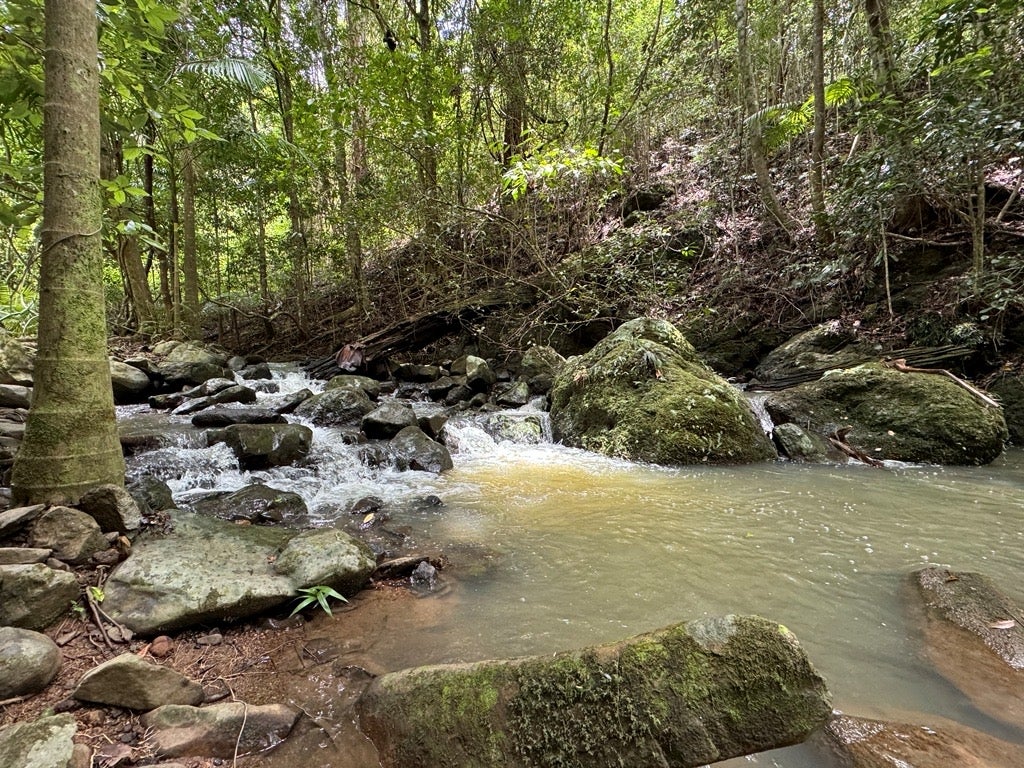New research shows how human-modified landscapes affect the diets of these marsupial scavengers.
The Tasmanian devil roams the island state of Australia as the apex predator of the land, feeding on whatever it pleases as the top dog – or the top devil. But some of these marsupial scavengers could be starting to miss out on a few items from the menu.
According to a study led by , living in human-modified landscapes could be narrowing the diet of the Tasmanian devil. The research, published recently in , suggests devils have access to vastly different cuisines depending on the type of environment they live in.
“We found Tasmanian devil populations had different levels of variation in their diet depending on their habitat,” says , a PhD candidate at and lead author of the study. “The more that habitat was impacted by humans, the more restrictive the diet became.”
A previous study by the team found , feeding on the same food items consistently over time. But human impacts could be influencing whether they have access to their favourite foods.
“How humans change the environment impacts the animals within them,” says , an ecologist at UNSW Science and senior author of the study. “Even small changes can have significant consequences for devils, so we need to be mindful of the consequences of our actions.”
The devil is in the details
For the study, the researchers investigated the diets of devil populations across habitats of differing levels of disturbance, from cleared pasture to undisturbed rainforest. They did this by analysing chemical stamps called stable isotopes in whisker samples taken from Tasmanian devils in different environments.
“It’s similar to how tree rings capture chemical signals about atmospheric elements over time. We’re doing the same thing with the devils, matching up the biochemical signatures in the whiskers to the prey so we can learn more about what the devils are eating,” Prof. Rogers says.
They found devils in human-impacted landscapes, such as cleared land and regenerated native forests, fed on the same food items, primarily medium-sized mammals. Meanwhile, in environments like rainforest areas, devils ate a broader range of prey and incorporated smaller animals, such as birds, into their diets.
“We found devils in heavily altered areas like cleared land fed on a smaller range of prey compared to populations living in ancient undisturbed regions, who had much more variety in their diet,” Ms Lewis says. “They may be turning to human-derived sources of food, such as highway roadkill, which are more readily available.”
Interestingly, devils living in regenerated native eucalypt forests also ate a smaller variety of food items. Comparatively, their diets were closer to the devils in cleared agricultural land than those from undisturbed forest regions.
“These regenerated forests not logged for many decades may look like natural landscapes to us, but the devils that live there have similar simple diets to the devils that live on cleared agricultural pastures,” Prof. Rogers says.
“The regenerated land doesn’t have the complex features such as tree hollows in large old trees to support diverse bird life and small mammals that the devil eats in the rainforest.”
Restrictive diets could increase threat
Devils that all maintain the same diet run the risk of interacting more frequently around carcasses, which is of particular concern for spreading the highly contagious and fatal cancer, Devil Facial Tumour Disease (DFTD). The disease has already reduced local devil populations by and spread to most of Tasmania.
“The highest rate of cancer transmission other than during the mating season occurs when they’re feeding around these large carcasses,” Ms Lewis says. “So, there could be an increased chance for the disease to spread amongst devils, and the devils themselves are also at risk of being hit while feeding.”
The researchers say the findings highlight the urgent need to protect what remains of untouched landscapes for both the devils and the species they eat.
“It’s apparent there is much more diversity of species available in these old-growth forests, and the devils are shining a light on how vital these pristine areas are, and the urgent need to preserve what remains from the constant threat of clearing and mining,” Prof. Rogers says.
In the next stage of the research, they hope to investigate the eating habits of devils in native grasslands to better inform conservation efforts across more habitats.
“By better understanding what is impacting devil diets, we can work to protect this iconic Australian animal and ensure their continued survival in the face of ongoing environmental change,” Ms Lewis says.







